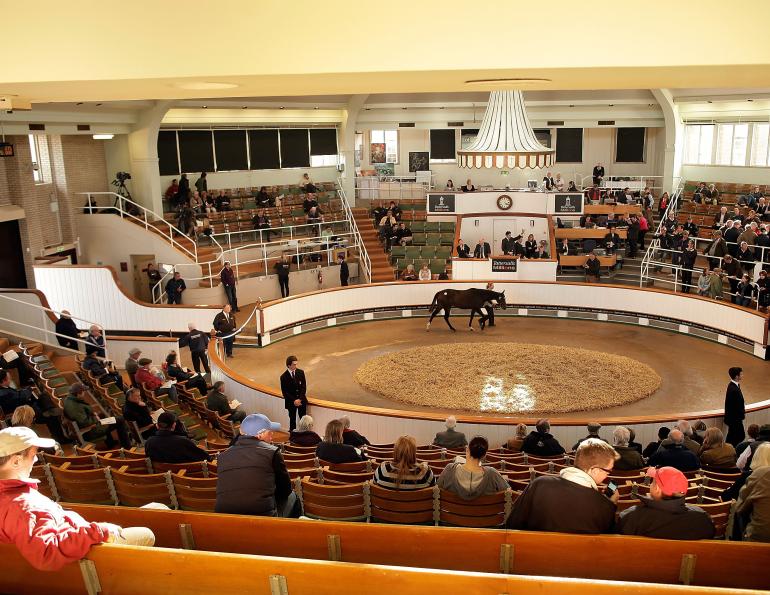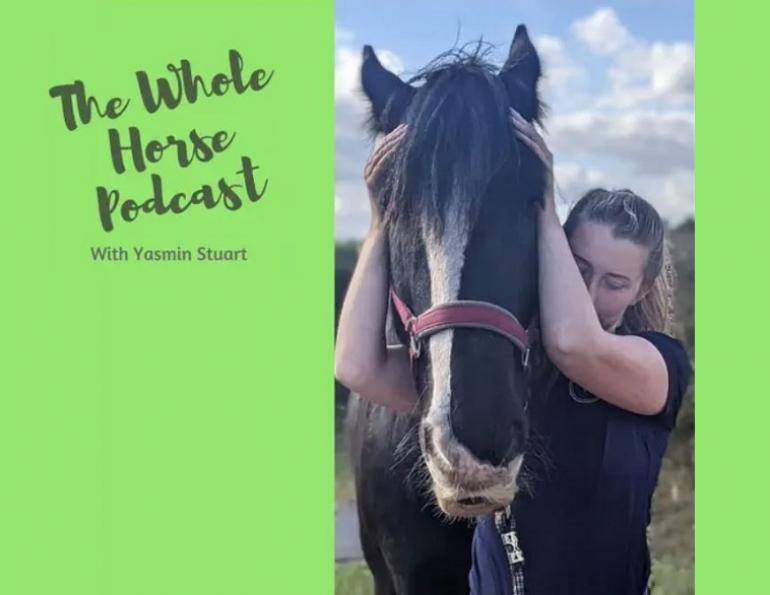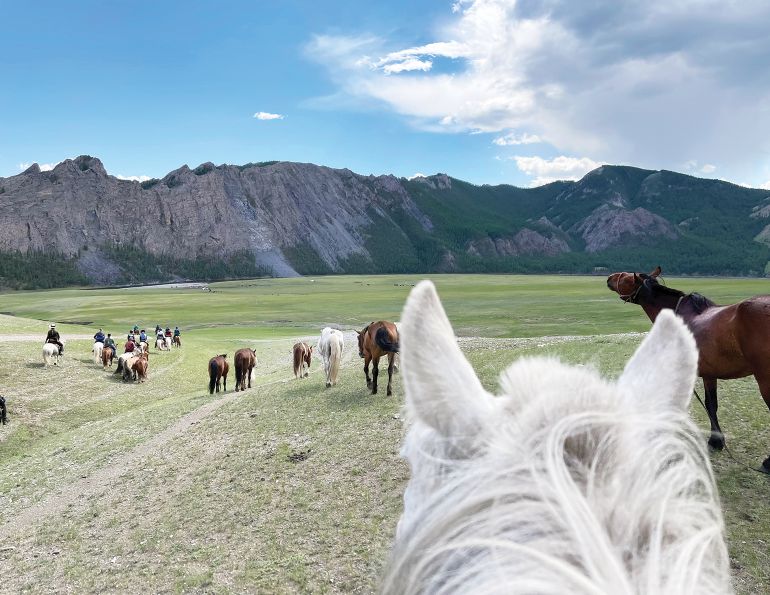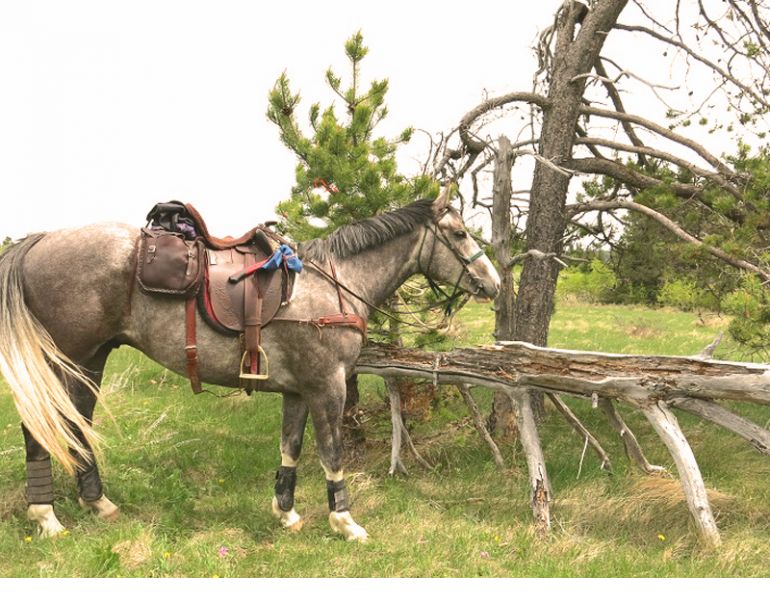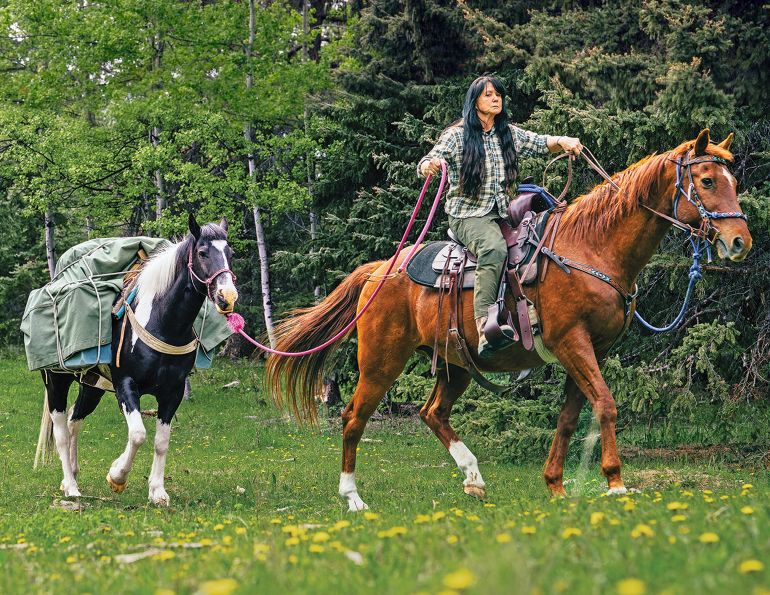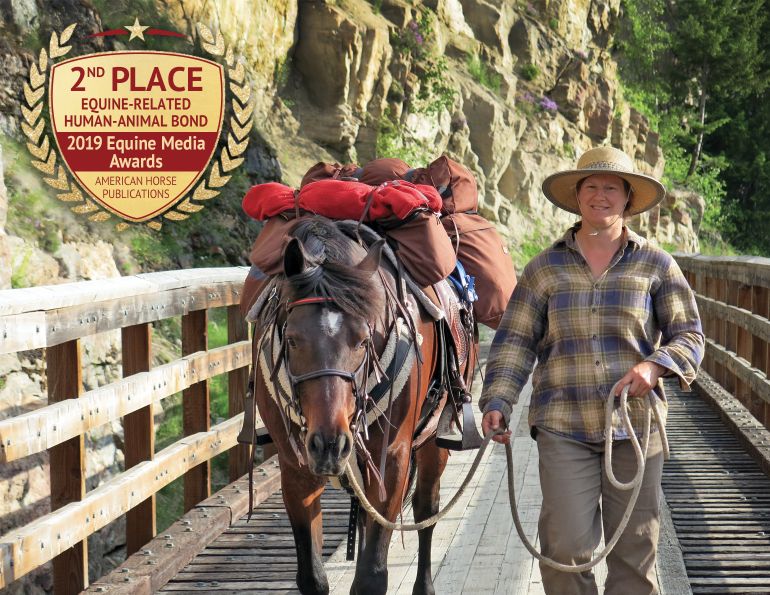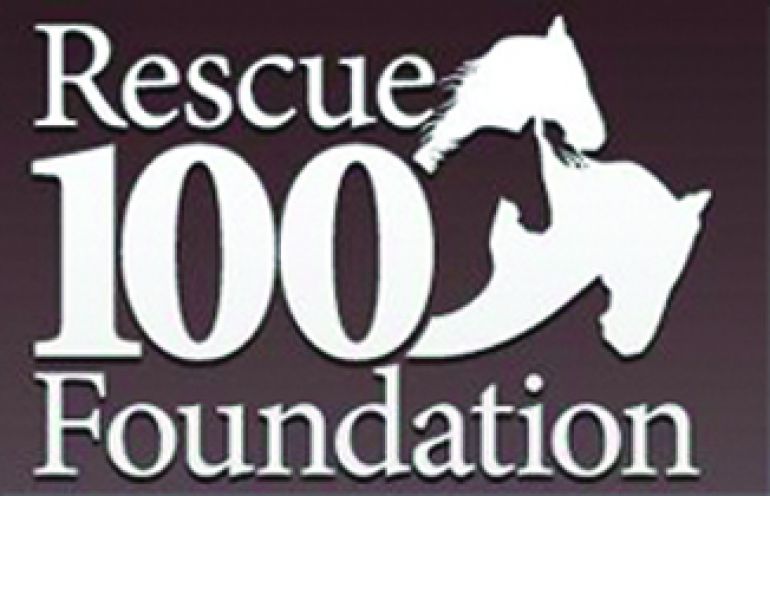By Karen Robinson
When the dressage club on Maui contacted me about giving a dressage freestyle clinic there, I didn’t need to think very long about my reply. The request came in December, when a Vancouver winter is at its SAD-dest. The following November I would get a break from the damp and cold by giving a clinic on Hawaii’s second largest island. I was curious to see what it’s like to keep horses in a place that for most of us conjures up images of palm lined beaches and mai tais, not dressage shows.
Most horses on Maui don’t live near the beach, but in a cooler zone partway up the mountain slopes. The private facility owned by my clinic host, Cindy, is located at 3000 feet (900 meters). Nights are cool at that elevation, and the heat never becomes intense in the way it does down in the surfing zone.
National Park Service horses share the trail with hikers into the Haleakala crater. Photo: Karen Robinson
Something else I noticed in the group of horses I saw was that nearly every one of them was at least a little overweight. The grass on Maui grows quickly — so quickly you can almost imagine you are seeing it rise out of the ground.
Plenty of hill work doesn’t compensate for the amount of grass Dutch Warmblood Dante eats every day! Photo: Karen Robinson
One of Cindy’s horses, Dante, is a Ramiro grandson that Cindy brought with her when she moved to Maui from her native Mexico. His generous girth and cresty neck are evidence that unlimited daily access to grass more than makes up for the exercise regime. He has no shortage of hills to run up and down, since the entire property is built on a very steep slope. I watched with some trepidation as Dante’s retired companion Daisy got down to roll on a steep part of the hill. My concern was unfounded; Daisy knew to keep her legs below her body, and she didn’t roll over. In fact, the slope made it easier for the 30-year-old mare to get back on her feet.
Cindy explains that a problem with the grass on Maui (which is not native) is that it creates problems with calcium deficiency, so she feeds a calcium supplement to her horses. It’s a blessing that the grass is plentiful, however. Cindy pays $25 for every 40-pound bale of hay that is shipped in from Washington State. At the other end of the digestive process, manure disposal can be a problem — the island of Maui is very concerned with ecology and waste disposal. With just the two horses, Cindy composts and bags the manure, which is then taken away by local farmers.
The horse community on Maui is small, and horse shows tend to be one-day affairs with modest numbers. Hunter, jumper, dressage, and Western shows each see between 20 and 30 entries per event. Clinicians like myself are invited on a periodic basis, but the island is not a hotbed of elite sport in any discipline. The attitudes of the riders in my clinic were hardly those of hardened competitors. Maui may be part of the United States, but the lifestyle of its inhabitants is coloured with the friendly and laid back culture of the island’s original inhabitants. The surfers on Maui may be world class, but equestrian sport here is still more recreational than competitive.
Bored with the Beach? Go for a Ride!
With more than two million people making Maui a holiday destination every year, the island predictably offers activities for every taste, including trail rides. There are several landscape options: beaches, pineapple fields, or high altitude bliss in the Haleakala crater. The mountainous landscape of Maui means there are several distinct climactic zones.
Horses and mules for trail rides and trail maintenance are trucked to the top of the Haleakala crater from ranches lower down. The mules pack trail mending materials into the volcano’s basin. Photo: Karen Robinson
Most horses on the island live at around 2,000 to 3,000 feet (700 to 900 meters), but if you are there for the heat, then you will want to visit one of several stables that offers rides through the ranches and lower slopes. If you are suffering from an overdose of tropical temperatures, a ride into the Haleakala crater will cool you off, but don’t forget the sunblock. The sun at 10,000 feet (3,000 meters) is even stronger than at sea level, though morning temperatures hover near the freezing mark, and the wind can be bitter.
Trail rides into the crater start at the top; the horses are trailered up to the parking lot from ranches lower down. The rides take around four hours and descend 2,500 feet (760 meters) into the dormant volcano’s basin. It’s not a bargain at around $200 USD per person including lunch, but then no one goes to Maui for bargains anymore. The Pony Express and Haleakala on Horseback both offer guided horseback tours in the crater.
Tourists are not the only people to ride into the Haleakala crater. Staff of the National Park Service on Haleakala use mules and horses for trail maintenance. The mules pack tools and materials down the steep trail, with the park employees leading the way on horseback. Vegetation and odors are sparse in the stunning lunar landscape of the crater, and the familiar aroma of horse manure is never far from the nose when you walk or ride down the Sliding Sands Trail.
Main article photo: Karen Robinson - It’s a long way up from the beach, and a different but equally spectacular landscape on Maui’s dormant Haleakala crater.



